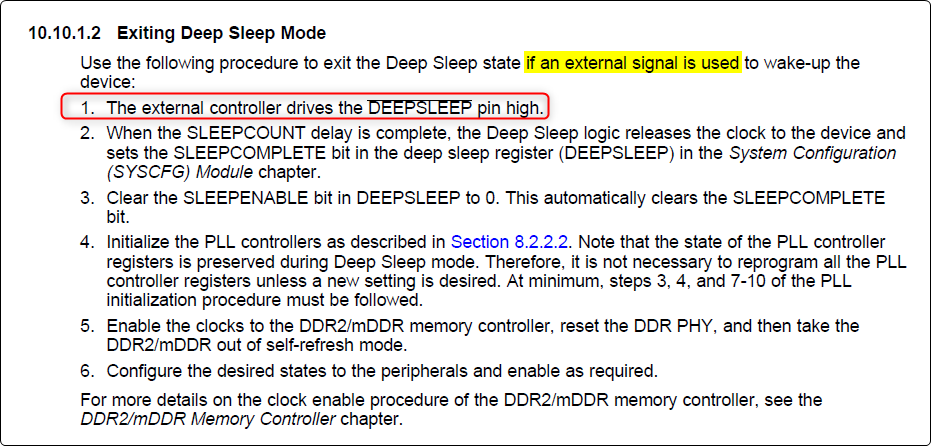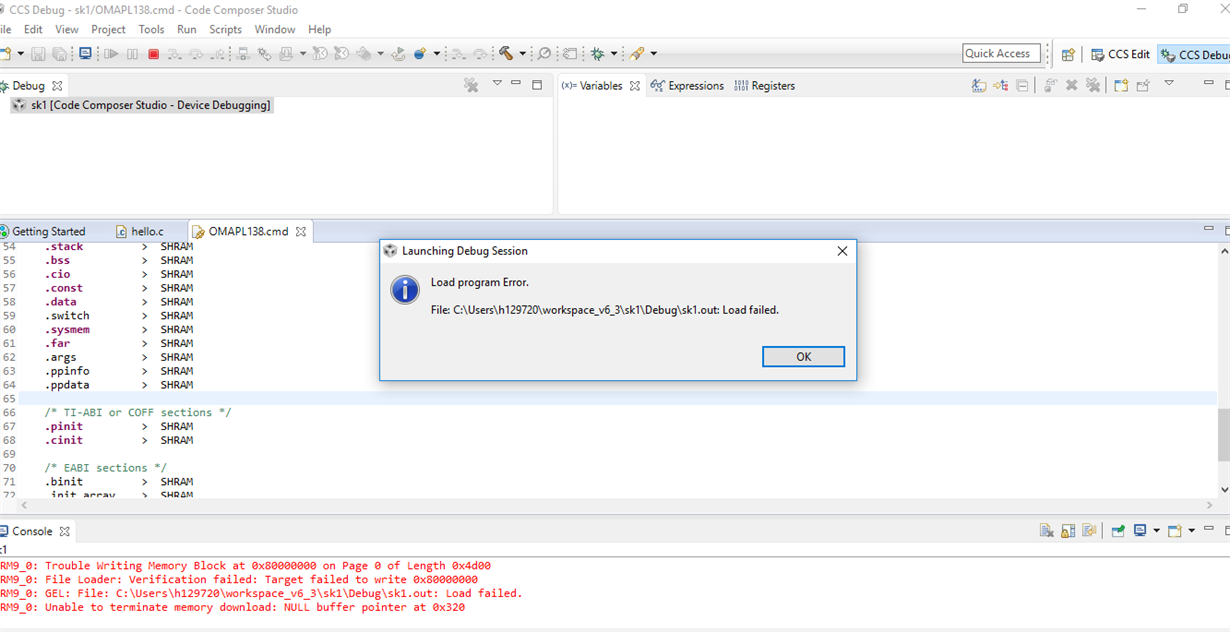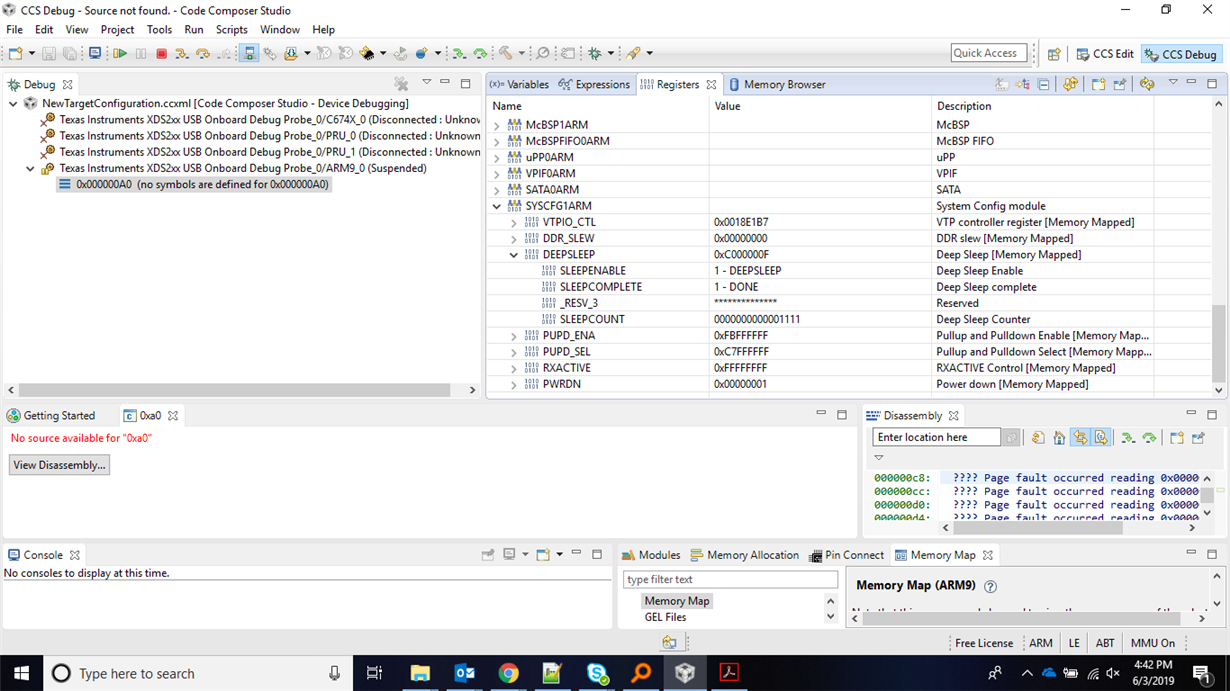Other Parts Discussed in Thread: OMAPL138, OMAP-L138
Tool/software: Linux
Hi,
Would like to wakeup omapl138 from deepsleep mode using GP0[8].
The device is entering the deepsleep mode upon doing echo mem > /sys/power/state.
Would like to wake the device up from deep sleep mode using the interrupt on GP0[8] by pulling the line low.
Please share your inputs on how to proceed on this.




